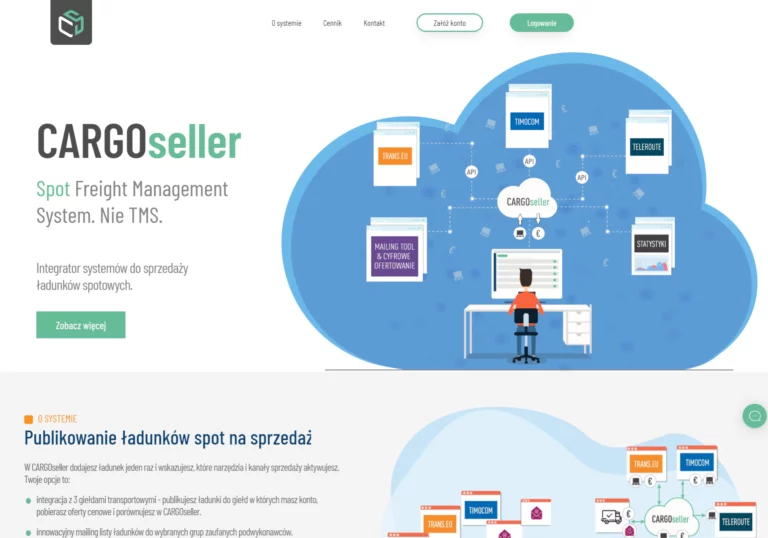Application programming interface often refers to a software intermediary that enables two applications to communicate with each other. In other words, it is the mechanism that allows interaction between two applications by use of a set of rules. API integrations happen when a particular application requires access to data (or rather information) stored by another application. On the other hand, connecting to an API may occur where a single application requires services from a different application. Often, connecting to API integrates software rather than users. However, in cases where user interactions are held, an application tends to take the user interface widget and display it.
Why are API integrations important?
APIs are important, as they allow standardization as well as simplification of data for the sake of users. A good example is WordPress enabling bloggers to place their Instagram handles at the sidebar of their blogs using Instagram’s API. Factually, every time one happens to use an application like Twitter, check the weather, or send messages on their mobile phones, connecting to API is required.
How does API integrate?
You might be wondering how the data is sent. How does API integrate with other software? Worry not, I will give you a simple illustration. Once you open an application on your phone, it connects to the Internet and proceeds to send data to a server. Once it is retrieved, the data is interpreted by the server before necessary action is performed. A response is sent back to your phone where the application interprets it and presents the information you intended to receive in a readable form.
Types of APIs and their functions
APIs can be classified in few ways – for example: who they are intended for or by their functions.
Now, we will focus on who APIs are targeted at. Daniel Jacobson, Vice President of Edge Engineering at Netflix, distinguishes two types:
- A large set of unknown developers (LSUDs), which means that you have no idea who’s using the API. These APIs are called open or public, because everyone has an access to them.
- A small set of known developers (SSKDs), which means that you now who all of the developers are. They can be partners, engineers or a contracted companies. That’s why this type of the API is also called private.
There are several types of APIs, each about different purposes, so here is another classification:
- Product API – we have one product that has an API on it, and people that buy this product. This way there are multiple versions of this API on network.
- Browser API – no matter which one you are using, they all have APIs built into them, that application developers have access to.
- Standard API – Specified API standards are basically a set of good practices in specific areas based on standards for creating and maintaining databases, computer networks, programming languages and accepted file formats.
- System/Embedded API – this one helps our devices to communicate with browsers, and then build applications.
- Web APIs – they are built around HTTP protocol and it’s a huge adventage, because to access them, almost every programming language can be used. A feature, which distinguishes Web API from traditional interactions in World Wide Web, is that the interfaces user is not directly a person using a browser, but an application. We use Web APIs every day without realizing it. For example mapping APIs, social APIs, eCommerce APIs or cloud APIs.
Another Way to Group API types
First and foremost, we must acknowledge the four main types of web APIs. They include:
1. Composite Application Programming Interface
This kind of API is involved in combining various data as well as service APIs. It happens to be a series of tasks that run synchronously due to a result of the execution and rather not at times when a task is requested. In addition, its major function is to hasten the process of execution as well as improve the performance level of web interfaces’ listeners.
2. Internal Application Programming Interface
They are also referred to as private APIs. Internal systems happen to be the only ones that can expose this kind of API thus suggesting that they are less known to others outside the system. Most companies use it within their premises to boost the quality of their products and services.
3. Partner Application Programming Interface
Programming API of this kind requires one to have explicit rights or rather licenses to access. The reason behind it is their unavailability to members of the public.
4. Open Application Programming Interface
There are no restrictions to connecting to an API of this type as it is available for the public to use.
Web APIs – Benefits and Specification of Particular Types
This kind of API will be mostly used by SaaS busniesses,that’s why I would like to describe it a bit more. Although these are not all benefits you can achive by using Web APIs, they can clearly show you why you should consider it.
- Thanks to the centralization of business logic, your effort will be significantly reduced, and the profitability of your work will increase,
- RESTful Web APIs are accessible by a variety of HTTP clients like Windows, Android, iPhone,
- Exposing the functionality of your existing code over the network provides an opportunity for other applications to use the functionality of your program,
- As its work is based on HTTP, it’s easy to define, expose, and occupy,
- Web APIs can truly help you with managing your website. Examples are Payment Request API, Bluetooth API or Navigation Timing API.
APIs by Communication Standard
1. XML-RPC
XML is the initialization of Extensible Markup Language and is a flexible text format meant for the creation of structured computer documents in a machine-readable form, developed in 1998 by the W3C (World Wide Web Consortium). It is a text format that allows you to save data in a form that is easy to read by both machines and people. In case of correctly formatted XML documents, we can talk about certain relations between elements. The XML specification speaks of ‘parents’ and ‘children’. In practice, the term ‘sibling’ is also used. Where is XML used? Every Android application uses XML files. ODT documents (a format used, for example, by Open Office), or DOCX (a format used by Microsoft Word) are actually zip files that contain XML documents describing the contents of the file.
XML-RPC, therefore, is a protocol that uses an explicit XML format to convey data compared to SOAP which uses a proprietary format of XML. Unarguably, it is older than the Simple Object Access Protocol. Also, XML-RPC is simpler compared to SOAP and uses a minimum bandwidth. For instance:
<firstName>Ivy</firstName>
2. JSON-RPC
Although this protocol is quite similar to XML-RPC, it uses JPSON format rather than XML format to transmit data. For example, {“firstName”:”Ivy”}.
JSON itself is a lightweight format for storing and transporting data, and is often used when data is sent from a server to a web page. JSON’s format is syntactically identical to the code for creating JavaScript objects, and it leads to possibility of easily converting JSON data into native JS objects. JavaScript Object Notation is a way to store information in an organized, easy to access manner. It is used primarily to transmit data between a server and web application, as an alternative to XML. An API that returns JSON can be accessed by an application written in Java, Ruby, Python, JS, PHP and many more. For JSON to be valid, the value keys must be strings surrounded by double quotes. A single quotation mark will not work. Another thing to watch out for is adding a comma after the last object. In JS such a record would pass, in JSON you have to avoid it.
3. SIMPLE OBJECT ACCESS PROTOCOL (SOAP)
SOAP is a protocol that tends to use XML format to transmit data. Its main purpose is to define the way of communication as well as the configuration of the message. In addition, it uses Web Services Definition Language (WSDL) in a machine-readable document to post its interface definition.
It’s also a web service, but older than REST – still, both are popular. Specification for SOAP Web Services is JAX-WS. Through a SOAP protocol, software components are shared. We can say that is a communication between Service Requester and Service Provider. It’s an XML-based protocol consisting of three parts:
- an envelope, which defines the message structure and how to process it,
- a set of encoding rules for expressing instances of application-defined datatypes
- a convention for representing procedure calls and responses.
Most SOAP applications use Web Services Definition Language (WSDL), which is authored in XML. WSDL is an XML markup language used to describe technical parameters of network connection of the client application with the Web service component.This structure makes it really handy for applications that expect their information to be provided in XML form, and the fact that SOAP can ride on a variety of network protocols, including HTTP, means it’s easily passed through firewalls, where other protocols might require special accommodation. It’s API is usually hidden by the higher-level interface for SOA. SOAP is designed to break traditional monolithic applications down into a multi-component, distributed form without losing security and control. SOAP can interact with any low-level network mechanism, f.e. HTTP, HTTPS, SMTP, JMS, RMI. The basic tags used to build SOAP messages are:
surrounds the whole message - contains header information
- contains information about request and response
it’s a description of errors that occurred during the cycle call.
4. REPRESENTATIONAL STATE TRANSFER (REST)
Unlike other web services, REST is not a protocol but rather a set of architectural principles. Its services ought to have certain features that include using the interface to manipulate resources as well as simple interfaces that are resources identified with ease within the request. It’s based on HTTP protocol. REST has a few rules that have to be followed.
- Uniform Interface – this rule tells us that the interface should provide standardize communication between client and a server. In other words, when we have a lot of devices, applications on these devices should communicate with the server by one interface. Thanks to it, while creating one interface, we can respond to the needs of all applications.
- Client/Server – there should be a clear fragmentation between applications working on client’s and server’s side. That’s why they can develop independently and we gain additional flexibility.
- Stateless – every question needs to have a complete information necessary for its correct completion. It means that the server is not allowed to store customer’s status information. It’s the client that delivers information, which is then analyzed by the server, whether the client has an access to resources or not.
- Cacheable – API should support data caching to increase efficiency. Server can be loaded with too many queries, that’s why we should store information in cache.
- Layered System – tasks, which servers do after the queries from clients, should not be revealed to clients, because they are not interested in what’s going on on the other side.
- Code on demand – this is the only optional rule. It provides the possibility of sending pieces of code (f.e. JavaScript), that can be done on client’s side.
An easy way of describing how REST works is to say that when we are asking for something, we get a list of results from the service we are requesting from.
Difference between XML and JSON
- XML supports different types of data such as images, graphs, charts, numbers, and text among others while JSON supports numbers and texts only.
- While XML has low security, JSON has more.
- XML often concentrates on documents while JSON mainly focuses on data.
Difference between SOAP and REST
- While SOAP is driven by function, data is what drives REST.
- While REST permits developers to easily create recommendations as there are loose procedures to follow, SOAP has precise rules as well as advanced security for developers to follow.
Significance of creating an API for your business
Discussions on APIs tend to be technical due to their nature. This is because they are considered more helpful to engineers as well as data managers. However, the act of programming API is equally beneficial to the business sector. It boosts the income level generated from business as well as helps organizations achieve various goals. Some of the benefits conferred to the business sector by creating an API are discussed below.
APIs create new streams of monetization
Often, the creation of stable as well as dependable monetization streams is the ultimate goal of every business premise. What most people fail to understand is creating an API offers direct routes to brand streams of monetization. Notably, programming API enhances authentication as well as authorization to safeguard reachability to its functionality. Therefore, from a business perspective, that kind of access may be as well accompanied by a certain amount of charges hence generating income for the business.
The key point here is that business data considered to be of high quality may be monetization as a function on a large scale. Programming API and access charges may end up being a stream of revenue that is predictable. One can integrate pay-per-module plans and free trials into their API’s functionality. A perfect and practical example happens to be 3Scales which offers good monetization streams providing many options that include function pricing as well as trials among others. Therefore, it is a perfect illustration of monetization driven by the implementation of an API.
Enhance innovation
Factually innovation plays a significant role in boosting business performance. Most thriving companies ensure that they make their innovation on one or more APIs. These include Amazon, Google, Twitter, and Facebook, among others. Advertisement is enabled by such APIs, thus ensuring that they reach distant markets. Isn’t it obvious evidence to prove that APIs are crucial in enhancing the innovation process?
APIs act as doors to reach the outside world
APIs are doorways to almost all talented personnel in the entrepreneurship structure. Compilation of all those talents helps to improve business performance and solve unfamiliar problems. Also, opportunities may readily present themselves for the benefit of the business once third parties are reachable.
Help in process automation
Usually, automation processes bring forth massive savings considering expense, time, and effort. Business Process Integration (BPI), as well as Business Process Automation (BPA), are, thereby, effective strategies that assist in cost saving. Often, this automation involves integrating applications as well as programming. As a result, this brings about API management that influences certain fields in the business, including workflows, analytics, data as well as product and service development, among others.
It assists in meeting regulatory compliance
Ultimately, APIs happen to be the simplest as well as cost-effective measure to ensure major business elements are implemented, especially when it comes to regulatory compliance. Most service providers are at times in situations that subject them to strict regulations requiring them to seek methodologies to meet them. For instance, the European Union business operations are faced with strict standards of data protection controlled by the EU Data Protection Directive. The creation of a proper way of securing data transmission depends on the ability to propagate effective standards to every element of one’s business. Unarguably, APIs assist to accomplish all this in a much easier way for long-term benefits.
APIs provide a good tool for competition in the business industry
Occasionally, what one does better than others in business is what sets them apart and makes them outshine the rest. Therefore, having a competitive advantage will surely ensure that the business gets boosted. How do you ensure a competitive advantage over others? Becoming competitive will entail ensuring an awesome experience for all users at all levels. All these experiences may not only be delivered effectively but also optimized by the use of an API.
APIs improve the experience with end users
Did you know that one can boost user experience through direct-controlled actions by simply using an API? APIs when adopted make the business provide better service to users of their products. They also allow for a highly tailored experience that is easily customizable.
APIs help to standardize communication with partners
Notably, it is almost impossible to find two partners that are the same, especially in situations involving high stakes of revenue where proper briefing and communication are necessary. Therefore, adopting API-centric criteria of communication helps to improve interaction and maintain a good relationship between partners. Interaction and adaptation in business tend to come slowly and are associated with an increased cost at every stage.
Challenges faced by firms when developing APIs
- There is a lack of an active developer community acting as a source of feedback on features and the design of an API.
- Organizations that are dependent on aged legacy systems face difficulties when trying to add modern APIs. This particular problem can be solved by point-to-point integrations. However, such systems are more likely to fail thus ending up affecting partners as well as customers adversely. As a result, valuable resources are wasted.
- Mostly, financial service firms face difficulty when it comes to accessing ample tools for designing, testing as well as monitoring APIs.
Joomla and WordPress Plugins using API
While after all this technical and business staff you might think that API is some narrow topic that is handled and used only by nerds, I would like to tell you that you are using APIs every day. Most (if not all) websites are using APIs in some form. Let me prove my point by listnig some of the Joomla and WordPress plugins that are using APIs.
Joomla! plugins
- Ajax Shoutbox 1.02 – a module that adds to the website based on CMS Joomla live chat/ shoutbox based on AJAX technology. Thanks to him, the visitors will be able to talk to any other visiting site.
- Google Translation Module for Joomla! 1.3 – the module allows you to translate English-language websites into several different languages. This plugin works through cooperation with an external Google Translator service. Supported languages are: English, German, French, Italian, Spanish, Portuguese, Korean and Simplified Chinese. The plugin does not translate websites available only after logging in.
- Contact Locator/Store Finder Plugin – it’s integrated with Google Maps, so it that allows customers to locate your stores/contacts easily. Packed with Geo Location and Google Maps Direction your customers will never have a problem getting to your locations. The store finder will be able to list of nearby stores/contacts around your web visitors from nearest to the furthest distance away.
- Twilio for Joomla – both of the following will ensure a simple communication channel on your website:
- Contact by SMS module – provides a contact form to send SMS messages to a backend phone number.
- Click 2 Call module – establishes a call between the customer and the backend number.
- MailChimp Auto-Subscribe – with MailChimp, you can promote your business across email, social, landing pages, or postcards. Your audience data gathered in one place will help you with creating the content they’ll like the most. Thanks to this plugin, new users will be automatically added to your MailChimp list in the background.
- Google Analytics Dashboard – main features of this extremely useful plugin are: number of visits, number of visitors, bounce rates, organic searches, pages per visit. Furthermore, you can see: visits by country on Geo Map, top 24 pages, top 24 referrers, top 24 organic searches, traffic overview.
WordPress plugins
- Yoast SEO – by using Google API, this plugin will guide you step by step through the process of optimizing your new content for the search engine. From the density of your target keyword, to the optimization of your title and h2 tags, to basic readability and metadata, Yoast SEO makes on-page search engine optimization really easy.
- Akismet Anti-Spam – it’s the only plugin you will need to keep your page spammers free. The plugin reviews and filters every comment that is shared on your website, providing a status history for each one so that you can determine which comments were found spammy.
- WordFence Security – malware, virus, and backdoor scanning, a firewall that includes rate limiting, blocking fake Google crawlers, IP whitelisting and IP blocking, email alerts of warnings and critical problems… These are only examples of tools included in this plugin.
- Google Analytics Dashboard for WP – besides tracking the real-time traffic details on your website, this one also offers:
- Organic searches, page views, bounce rate analytics stats
- Locations, pages, referrers, keywords, 404 errors analytics stats
- Traffic channels, social networks, traffic mediums, search engines analytics stats
- Device categories, browsers, operating systems, screen resolutions, mobile brands analytics stats.
- MailChimp for WordPress – it’s the same plugin as for Joomla and also helps your visitors with simple subscription to your newsletter.
- Nextend Social Login – thanks to this plugin, your visitors can easily register to your website with any social account they want – it takes only one click to connect. There are many social services, f.e. Facebook, Twitter, Google+, so users will have a free hand choosing their favourite one.
- Albacross – allows you to find out which companies and potential customers are visiting your website and how to approach them. You can also track their activity to see which pages are the most interesting for them.
- PayPal Checkout – fast and easy way to buy anything, anywhere with just a few taps. It accepts all major credit and debit cards in almost any currency. Customers are more likely to buy your products when they see PayPal icon.
With the set of well chosen plugins installed into your backend, you have an incredible chance to improve the functionality, aesthetic, and efficiency of your site both for yourself and your viewers. For all these reasons, do not hesitate and let APIs help you with managing your website.
Sailing Byte – creating an API has never been easier
As Sailing Byte, we are in a good position to design, create, secure, monitor and manage APIs. We offer business organizations a wide range of services ensuring implementation solutions for integration as well as the development of APIs. We guarantee instant connectivity as well as API integrations to popular financial services as well as applications. Also, we ensure constant consultation with service developers so that programming API for our esteemed clients is performed to the highest standards. Our main goal is to ensure that we readily avail tools that facilitate sharing of adequate information throughout systems, services, and applications. All the solutions we present to organizations provide connectivity that enables them to unlock their data and systems thus ensuring that the APIs they create are powerful. Interesting, right? Work with us! We will ensure that those APIs scale high enough to meet enterprise requirements. Click ‘schedule time for meeting’ below to book your consultation.




